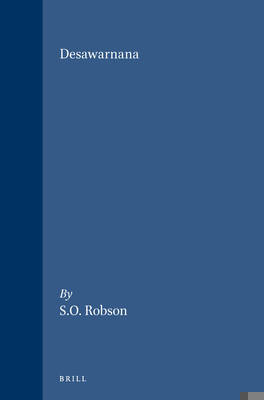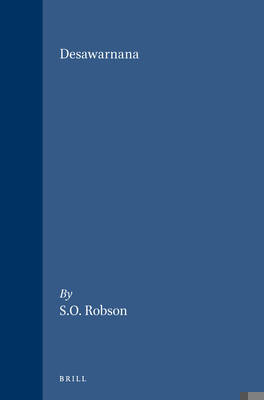
- Afhalen na 1 uur in een winkel met voorraad
- Gratis thuislevering in België vanaf € 30
- Ruim aanbod met 7 miljoen producten
- Afhalen na 1 uur in een winkel met voorraad
- Gratis thuislevering in België vanaf € 30
- Ruim aanbod met 7 miljoen producten
Zoeken
Omschrijving
It is just over a century since the first manuscript of Désawarnana (also known as the Nagarakrtagama) was rescued from the sack of the palace at Cakranagara in Lombok. Once its importance for Javanese history was recognized, its place was assured: our picture of the greatness of the Javanese kingdom of Majapahit in the second half of the 14th century is based largely on the evidence of this one text, and it is true to say that this picture has formed an inspiration for modern Indonesians as well. The text is not a literary masterpiece, and it is not typical of its genre; in fact it is unique. One of the reasons for this is the fact that here and there its author, Mpu Prapanca, tells us something about himself, in particular when he accompanies his king as Superintendent of Buddhist Affairs on a long journey through the countryside of East Java in 1359.
Specificaties
Betrokkenen
- Auteur(s):
- Uitgeverij:
Inhoud
- Aantal bladzijden:
- 168
- Taal:
- Engels
- Reeks:
- Reeksnummer:
- nr. 169
Eigenschappen
- Productcode (EAN):
- 9789067180948
- Verschijningsdatum:
- 1/01/1995
- Uitvoering:
- Paperback
- Formaat:
- Trade paperback (VS)
- Afmetingen:
- 155 mm x 234 mm
- Gewicht:
- 240 g

Alleen bij Standaard Boekhandel
+ 112 punten op je klantenkaart van Standaard Boekhandel
Beoordelingen
We publiceren alleen reviews die voldoen aan de voorwaarden voor reviews. Bekijk onze voorwaarden voor reviews.








